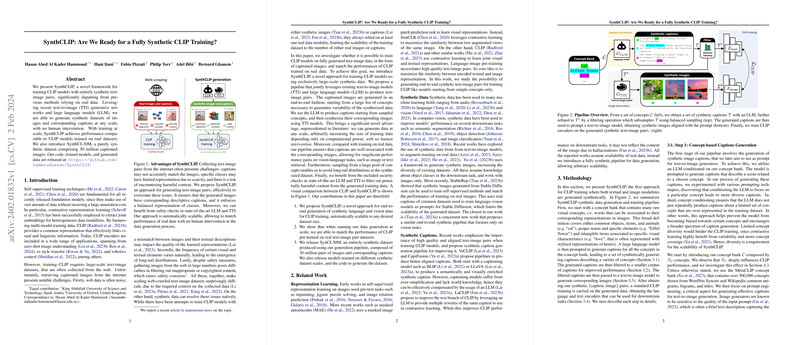Overview
The recently proposed framework called SynthCLIP marks a significant paradigm shift in the training of CLIP models, employing entirely synthetic text-image pairs. This introduces an innovative vantage point over traditional models that depend on real-world datasets, which are often riddled with inaccuracies, biased representations, and potentially harmful content. SynthCLIP not only overcomes these drawbacks but also opens the door to large-scale, human-independent dataset generation.
Advantages of Synthetic Data
The initiative behind SynthCLIP is particularly notable for its potential to create well-aligned and balanced synthetic datasets, assumed under the notion of SynthCI-30M, containing 30 million captioned images. This approach eliminates common data collection issues such as caption-to-image mismatches and the natural emergence of long-tail distributions. The automated scalability of this method implies that the data quantity can be adjusted by computational capacity rather than manual curation efforts.
Methodology and Implementation
Delving into the methodology, SynthCLIP amalgamates the capabilities of text-to-image generative networks with LLMs to produce diverse and representative text-image data. The pipeline begins with an LLM formulating captions from a comprehensive concept list, followed by a TTI model generating the corresponding images. This process is intrinsically safe, as it employs built-in security checks from state-of-the-art LLMs and TTIs. The entire framework and associated models, including the generated dataset, have been made available for public access.
Experimental Validation
Turning to empirical validation, SynthCLIP demonstrates its robustness across varied vision and language tasks. An assortment of experiments underscores that as the synthetic dataset's size scales up, there is a consistent augmentation in performance, aligning with the models trained on real-world data. For instance, when analyzing tasks like image and text retrieval or zero-shot benchmarks, SynthCLIP models fed with up to 30 million synthetic samples exhibit competitive prowess against counterparts trained on real datasets like Conceptual Captions 3M and 12M. These findings are not only a testament to SynthCLIP's potential but also highlight the framework's scalability—a quintessential factor for AI model performance.
Final Thoughts
In summary, SynthCLIP's proposition to utilize fully synthetic data for training CLIP models introduces an alternative that could chart the course for future AI training methodologies. It not only adeptly navigates around the perils of real-world data but also provides scalable and safer ways to train powerful vision-LLMs. This research poses a substantial impact on the breadth of AI applications, tightening the alignment between generated synthetic data and associated tasks.
